6 tips on how to make a lawn in the country with your own hands
Recently it has become very popular to decorate your summer cottages with neat, well-groomed lawns. They not only delight the eye and make the territory visually A bit more, but also purify the air and serve as an additional source of moisture, which can not but rejoice on especially hot days. It is a mistake to think that any lawn on which grass grows can be considered a full-fledged lawn. In England, there is a saying that only a green area that is at least 200 years old has the right to be called a lawn. Therefore, we can safely say that this is a lot of work and daily care. But do not immediately abandon your desires. In this article we will give 6 tips on how to make a lawn in the country with your own hands for a relatively short period of time and without titanic efforts and costs.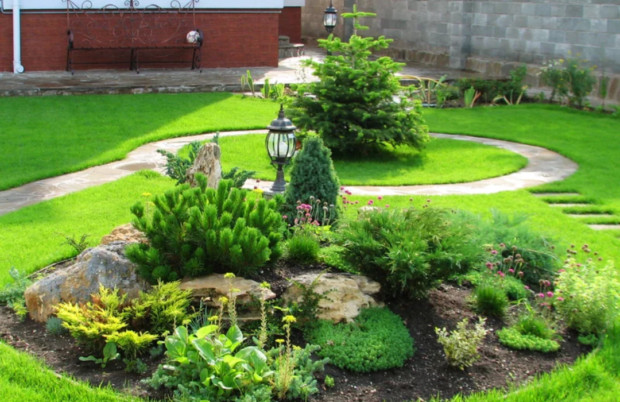
1. Determine the type of lawn
Before embarking on various preparatory work, you need to know exactly what type of lawn you need. For this it’s worth decide on his destination - it will be just a decorative planting, or your children will play on it. Depending on this, you need to choose different types of seeds or ready-made mixtures, prepare the soil for planting differently and take care of the site. The most in demand are the following types of lawns:
- Landscape gardening a lawn is the most suitable variety for organizing in a summer cottage. The preparatory work, although it lasts for several weeks, but in terms of the ratio of expended forces to the final result, this is the best solution. And after our detailed recommendations, you will cope with the process of self-arrangement without much difficulty. The composition of the seed mixture includes cereals, which can be called unpretentious. They tolerate scorching sun rays and the lack of nutrients in the soil quite hardy. Lawn parks are often planted around pools, recreation areas or patio.
- Meadow or Mauritanian the lawn is the brightest and most “lively” type of lawn that will appeal to lovers of forbs. If you want your own summer cottage to have your own slice of a real alpine meadow, then definitely choose a Moorish lawn. You can make a plant composition yourself, or you can purchase a ready-made mixture for sowing. All plants in it are selected in such a way that they do not interfere with each other's growth, develop at about the same time, do not drown out the root system of neighboring plants and form a uniform, colorful and very saturated flowering carpet. Such plantations require intervention only after some species of plants have flowered. Then they need to be mowed, to remove dried and yellowed leaves. Walking or lying on such a lawn is undesirable. The height of the plants on it is 10-20 cm. Any details will be immediately visible.

- English or ground grass - perhaps the most delicate and delicate look. It is absolutely not intended even for short-term movements on it. And to sit on the litter, on soft grass, there can be no question. Ground grass is intended only to be admired, and preferably from a distance. Seeds for planting are a mixture of very expensive and fragile plants.Such plantations require very nutritious and high-quality soil, regular moistening and care. It is reasonable to use English lawns for complex landscape compositions, where they look luxurious and very original. Arrangement of such a lawn is a very difficult and troublesome undertaking, so before you start, think about whether you can ensure the proper level of plant maintenance, or waste your time and money.
- Sports a lawn - ideal for arranging playground or a small sports field. This type of lawn is suitable for walking and training animals. Perhaps you are breeding thoroughbred dogs. A distinctive feature of such a site will be its resistance to trampling. Seeds for it are selected taking into account the large loads that the green cover will experience. Plantings will be tough, hardy and unpretentious in care. Even with active use, your site will not be covered with “bald” spots and will be as dense and fresh. The only thing to consider before landing is the reinforced substrate, which will help to avoid tears and integrity violations of the coating.

- Universalrolled lawn - The fastest way to arrange green areas. It is very convenient in that the already sprouted grass is sold along with turf, twisted into rolls. The presence of a “native” fertile layer serves as a guarantee that the grass will easily take root in a new place, will not wither and will not disappear. Rolled lawns are designed for laying on areas of active use. They can play ball and have a picnic. Herbs in its composition are very hard and dense, therefore they do not differ in special aesthetic properties. Such a lawn is not used as a decorative lawn, and it is much cheaper to sow a site with its own costs. In addition to the high cost, a roll lawn involves a special way of preparing the soil and the ability to properly line strips.
Further we will consider in more detail technology self step-by-step arrangement the most suitable type of lawn for a summer residence is landscape gardening.
2. What is the best place to set up a lawn?
Oddly enough, but in addition to your preferences, there are others factors affecting location choice under the lawn. Let's consider in more detail for each type of sites:
- If you prefer the English lawn, then consider the fact that he prefers a completely open area, without the slightest shadow and wind.
- No type of lawn will look like it could if you equip it near buildingsthat will cast a shadow.

- Green Zone Organization under fruit or ornamental trees - The idea is beautiful, but unlikely. Herbal crops are simply not enough nutrientsthat will instantly pick up stronger root systems of trees and sunlight. And they cannot grow in the shade of a tree crown. The grass will not be so rich green and elastic. In order to somehow save the situation, you have to cut the lower branches of the trees - this will slightly facilitate the access of the sun. But why damage already mature plants if you can choose a better place?
- To grass crops excessive moisture is contraindicated. This will rot the root system. Therefore, if your site is located in a lowland where a large amount of moisture constantly accumulates, it is necessary to equip a good drainage before sowing.
- For a perfect lawn you need perfectly flat terrain. Pits or protrusions that have an angle of more than 30 ° are not allowed. They must be forced to equalize. Firstly, in such places water will stagnate or the soil will be subject to erosion, and secondly, when you will cut the lawn, this will cause tangible difficulties.Therefore, it is better to make a little more effort at the very beginning and not be too lazy than to regret it every time or redo the already formed area each time. The appearance of this will suffer significantly.

Many really like the idea of arranging country tracks of lawn grass. Indeed, such green paths look very unusual and cheer up. Of course, for such purposes it is worth choosing seeds intended for sports lawns or rolled lawns. But in places of greatest use, where the feet of guests and family members step with enviable regularity and almost to the same place, even such resistant varieties of herbs will not stand. They are intended for intensive movement, but throughout the site, and not along its narrow piece. To preserve pleasant greenery, but not to give up your desire, additionally lay wooden cuts or small logs on the path that you can step on without fear.
3. Tips for preparing a seat
We decided on the type and purpose of the lawn, we chose a place, the time has come for more complex preparatory work, namely the preparation of the soil. This process involves three major stage and lasts from 1 to 4 weeks:
- Drawing a marking. The easiest way to do this is with small pegs and rope. Along the perimeter of the future lawn, small pegs are driven in, which are tied with a rope. Tie the rope as low as possible to the ground, then the outlines will be viewed more clearly. The marking is necessary in order to estimate the area of the future green zone, if necessary, adjust its size or contour and lay flowerbeds, fences and paths in advance not at random, but with high accuracy. This will save you from having to transfer or remake anything after the first shoots. Low green areas usually reach a height of no more than 5 cm. They always have smooth edges and clear boundaries. Clear geometric shapes are suitable for them. Meadow grass or ground grass look more elegant if their borders are wavy.

- Weed removal. This is a very important stage, which should be given special attention. The more carefully you cultivate the soil now, the less unwanted seedlings will appear on it after sowing, and you will not need to constantly mow the lawn. To get rid of weeds, you need to treat the site with a general action herbicide. Those places that are particularly prone to the appearance of “uninvited guests” should be processed several times with an interval of two weeks until they disappear completely. During this time, weed seedlings that could not be destroyed will appear. It is better to treat with a herbicide in early spring. Closer to autumn, seeds can go deeper into the soil, and you just won’t reach them, but in the spring they will sprout, as if nothing had happened.

- Alignment. After the plants in the treated area have wilted and dried, it is necessary to weed it, remove unnecessary rhizomes and other debris and level it with a rake. If you see that the site needs a large amount of fertile layer and is simply unsuitable for planting, the soil needs to be purchased. This is costly and expensive, but at the same time you have the opportunity to permanently get rid of weeds. To do this, lined on the prepared territory non woven fabric, on top of which in the future a fertile layer will be laid.

4. Prepare fertile soil
No less important stage, at which favorable conditions are forming for timely and plentiful shoots. For this we need about a week.
- To correctly pick up necessary type of fertilizer it is necessary to determine the composition of the soil and its structure. For this, in any horticultural store, special tester strips are available for sale, which determines the degree of soil acid. If the test shows that the soil is too acidic, you must add chalk or slaked lime to neutralize the reaction.If the structure of the soil is clayey, heavy, you need to make it more loose and airy. To do this, add humus or humus.
- For a certain type of seed, there is a preferred complex of mineral fertilizers. At this stage, they need to be added to the soil in the amount specified on the package with seeds. Depending on the time of year when you are preparing the land for sowing, there are mandatory recommended additives. In early spring, it is advised to add nitrogen fertilizers, which provoke rapid growth, and in the autumn, they recommend phosphorus and potassium, which help the grass easier to tolerate wintering. If before that you added biohumus to the soil, then the amount of mineral fertilizers must be reduced.

- Fertilizers need evenly distribute throughout the site. You can use a rake, at the same time and fluff up the top layer of soil. Using a watering can or spray hose, the area should be slightly moistened and again fluffed. The ground should be moist and loose, but not stick to the garden tool.
- Now the most important point is final alignment plot. To do this, you will need a special skating rink, the weight of which ranges from 50-100 kg. Such a tool can be rented in specialized stores. It is necessary to roll away the soil until your tracks no longer print on the surface. If you encounter a hole or a bump on the way, you need to cut them off or fill them up and re-roll this place.
- After rolling, the site should be allowed to rest, settle down. This usually takes several days. If time allows, it is better to wait a week. During this time, weeds that could not be destroyed, or seeds that were too deep in the ground, can sprout. Some unwanted plants can get on the site with humus. They must also be deleted. Just weed the area in the right place and level the soil with a rake.
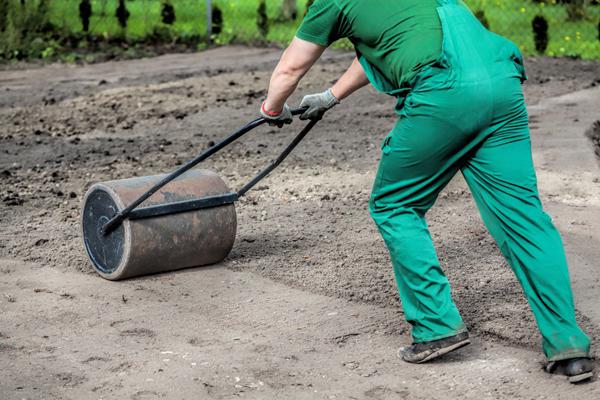
Agree that in order to fulfill the above points in a quality manner, it is unnecessary to have any special skills. Even a novice summer resident will cope with this. After that, it remains the case for small, namely, sow plot selected seeds.
5. How to sow the plot and, most importantly, when?
So that the future lawn is evenly covered with thick grass and successfully wintered for the first time, you need to not only plant it correctly, but also choose a good time for this. A small area can be sown in one day. 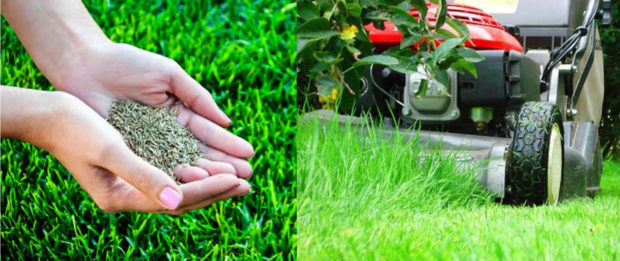
Getting started follow so simple tips:
- Even before buying seeds, calculate the area to determine the number of packages. Usually they indicate the recommended covering area. If in doubt - it is better to take a couple of packages more. The denser the seedlings, the more beautiful the lawn will be. But if you decide to save money, then in the end you can get bare areas for which there simply were not enough seeds. Approximate seed consumption rate - 40-50 g / m2. After the first wintering, the lawn may need replanting or repair, such work will take about half of the sown amount.
- Very important distribute seeds on the site evenly. To do this, mentally divide the lawn into several identical areas. Then distribute the seeds between them so that each plot gets the same amount. Now you will definitely know that, for example, at 1 meter square. Soil you have two packs of seeds.
- Sowing seeds evenly with your hands is quite difficult. Experienced summer residents advise sowing half the seeds along the site, and the rest across. This is much better. Some recommend mixing seeds in your hand with a little river sandso that they do not stick to the hands and are easier to disintegrate. It would be nice to use a manual seeder, if any. Sow slightly more seeds near the tracks and along the edges of the plot.In these places, the lawn can be trampled down more intensively, and a larger amount of grass will help maintain the same appearance both in the middle and at the edge.

- For seeding choose windless day, otherwise half of your seeds just won’t get to the right place.
- If you see that the soil is too dry, moisten it slightly with a watering can or other device. The main thing is that the watering is rainy and does not wash away the seeds just sown.
- Now with the help of the French rake you need a little to loosen topsoil and hide the seeds so that they are not pecked by birds.
- Using the roller, finally roll the area and moisten it again. Do not overfill. Enough moderate watering.

To not leave noticeable traces from shoes and do not tamp the lawn during sowing, put a long cardboard under your feet. It will reduce the load on the soil and it will be easier for you to loosen and hide the seeds at the end.
Now for the most suitable time for sowing. If you are planning a grandiose project and a large-scale green area, which will require a long preparation time, then you can start the preliminary work in the winter. You can clear the territory, apply preliminary marking, assess the type and size of the future lawn and lay all the necessary decorative elements, stone beds, etc. Try to guess so that the stage of sowing seeds falls at the beginning of spring or the end of summer, that is, at May or August. Young shoots will sprout especially actively in the spring, and at the end of summer the soil is well saturated with moisture and warmed up. This will create very comfortable conditions for young plants.
Another important point that indicates that this is really the best time is the state in which the lawn should be before wintering. If you want the young grass to be strong, saturated and elastic, you need to have time to cut the lawn at least 1-2 times. Each haircut helps strengthen the root system, which in turn has a positive effect on the appearance of the green cover. On average, the first shoots appear after two weeks, sometimes after three.  Mowing the lawn is possible only when the height of the grass is 10-11 cm. A small amount of weeds may appear along with the grass - do not despair, after a few cuts they will disappear completely.
Mowing the lawn is possible only when the height of the grass is 10-11 cm. A small amount of weeds may appear along with the grass - do not despair, after a few cuts they will disappear completely.
6. Tips for lawn care at different times of the year
If you can already see the first shoots, then you have done a great job that was not in vain. Now it is important to learn how to properly care for a young lawn and not spoil its appearance. The most effective way to maintain a neat and well-groomed lawn appearance is to a haircut. In addition, this is the most effective way to combat annoying weeds.
In its first year, the lawn will be very vulnerable and tender. Its root system is not yet deep and strong enough. In this regard, try to walk on it as little as possible, do not give a large load to individual sections and try to protect young grass from raids by pets. 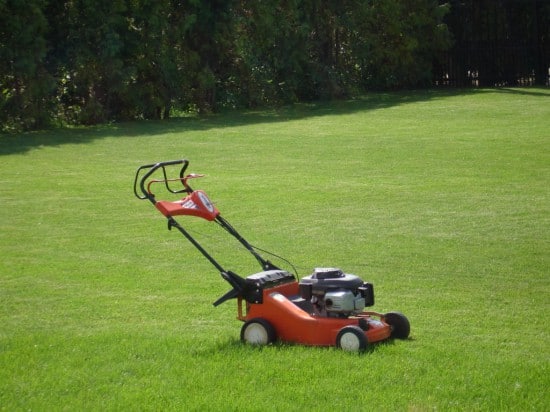
How to trim lawn:
- In fact, cutting is a great stress for milking plants. Because of this, it is not recommended to cut more than 1/3 of the stem height in one mowing. Moreover, its total height does not matter.
- The first mowing is recommended only after the grass reaches a minimum of 10 cm. In this case, the legs of the lawn mower must be raised so that they cut no more than 1 cm, that is, the very tips. Be sure to make sure that the knives are sharp and do not “chew” the shoots, otherwise you run the risk of tearing them out of the ground along with loose roots.
- After several such haircuts, you can lower the legs a couple of centimeters. Thus, gradually reduce the height until it reaches the mark of 5 cm.
- Each haircut contributes to the fact that the plants begin to scrub and let out additional shoots, thereby increasing the density of plantings.

- A strong root system of the plant is the key to the resistance of the grass to trampling. The more often you mow the lawn and walk along it, the worse the shoots take root and the rhizome weakens. And instead of improving the appearance of the lawn and strengthening the grass, you will get the opposite effect. It is very important to give the green cover a break from the stress. To understand how long it will take, measure the height of the grass. If it has already reached 12-15 cm, then we can assume that the lawn is again ready for mowing.
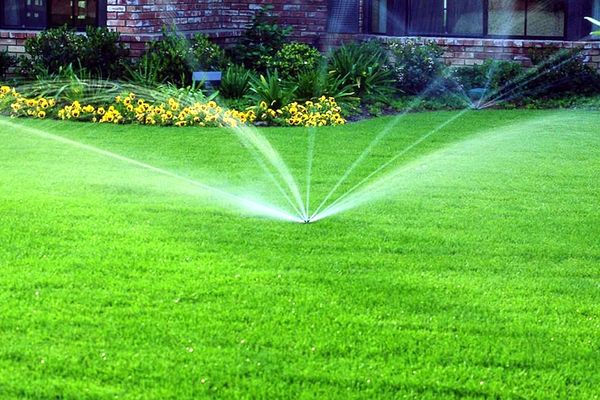
In addition to timely mowing, the lawn needs regular moisturizing. Watering the lawn they are recommended only through special spray nozzles, so that a strong pressure of water does not wash out young plants. The humidification depth should be 5-7 cm. A lawn 2-3 years old with uniform, dense greens is considered mature and strong.
For some care nuances behind the lawn in different time of year:
- The period of rest sets in in the winter. At this time, there is a danger of freezing grass under the influence of too low temperatures. Plants also become weaker. Because of this, you should refrain from walking around the site and other loads. It is necessary to ensure that the territory does not lay too thick a layer of snow, which will exert considerable pressure. However, a thin snow cover will protect plants from gusts of frosty wind, so it should not be completely removed as far as possible.
- In the spring there is a danger of rotting the root system due to accumulation and stagnation of moisture on the lawn. This may occur due to late snow removal. Be sure to periodically pierce the gray areas with a pitchfork. This will help water soak into the ground faster. This will not happen if you have provided a drainage pillow. But this makes sense only in large areas. In the spring after the onset of heat, you can make fertilizing based on mineral fertilizers with nitrogen in the composition. When the soil is completely dry, the site must be combed well with a non-rigid rake, remove dried grass and other garbage. After that, you need to sow the seeds. This will help block possible gaps that have formed after wintering. The first haircut is carried out after the shoots reach a height of 10 cm. If you did everything on time, it will be approximately mid-end of May.

- In summer The main care is regular haircuts and timely watering. Mowing grass below 5 cm is not recommended. After cutting, be sure to water. In particularly hot months, watering should be increased. It's better water the lawn twice a day - morning and evening. Avoid watering in the daytime, wet shoots can burn under scorching rays and turn yellow. Automatic sprinklers are best suited for watering the lawn.
- Fall harvesting dry shoots or leaves and preparing the lawn for winter takes a lot of time. It is necessary to introduce another portion of fertilizers, but not aimed at active growth, but at increasing the nutritional properties of the soil. This will help the lawn move the cold easier.
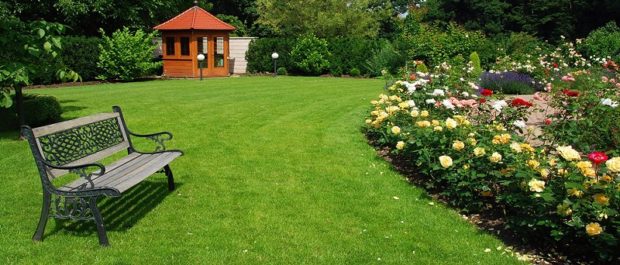
After reading this article, many will find that organizing and following lawn care is a very long and painful task. Indeed, in the initial stages you will have to make a lot of efforts, but as soon as you start, you will immediately be inspired by this idea and will enjoy the process. In addition, you can approach the idea more creatively and add interesting decorative elements. And when you see how, after a couple of years, instead of a boring flowerbed, a chic green carpet will spread in your country house, it will be a pleasure to look after it!

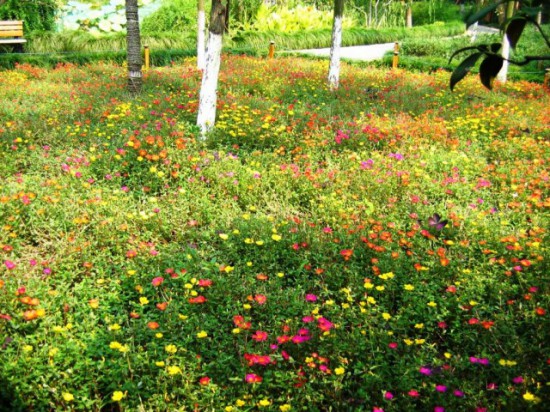

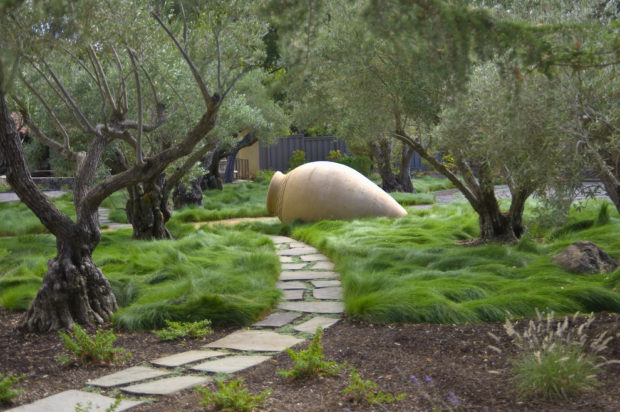
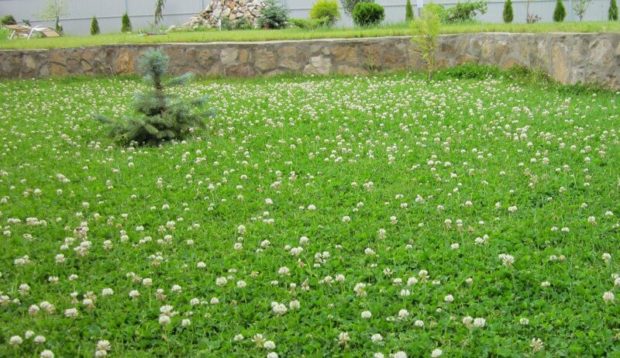
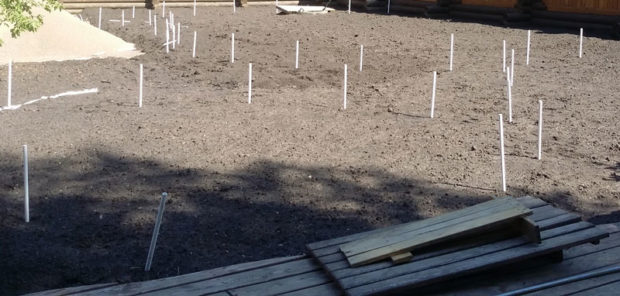
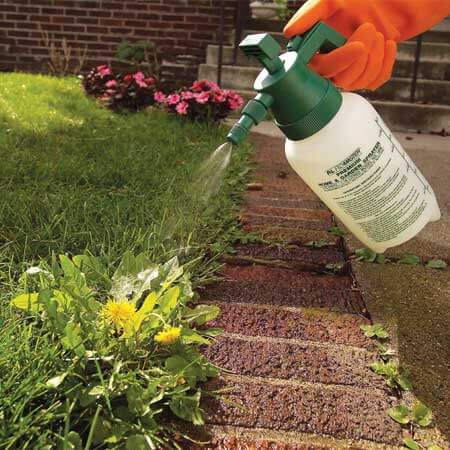




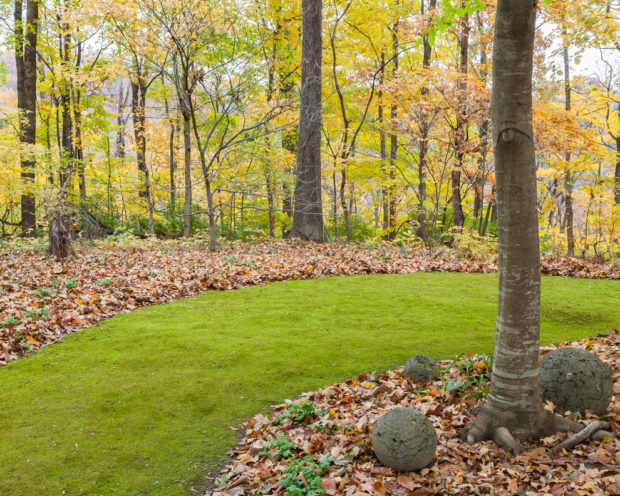
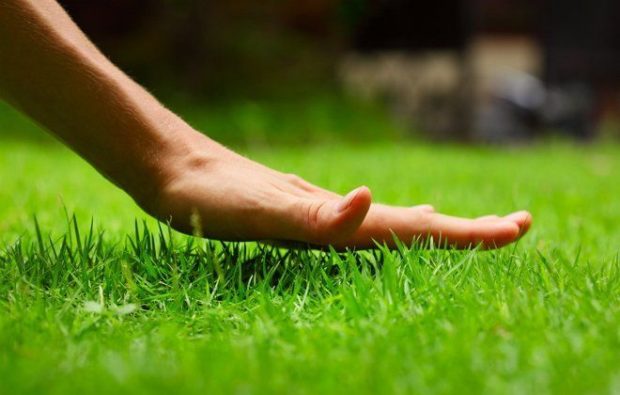
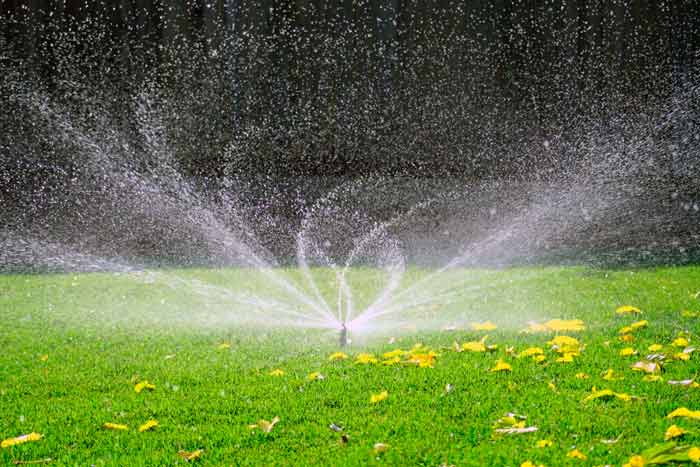
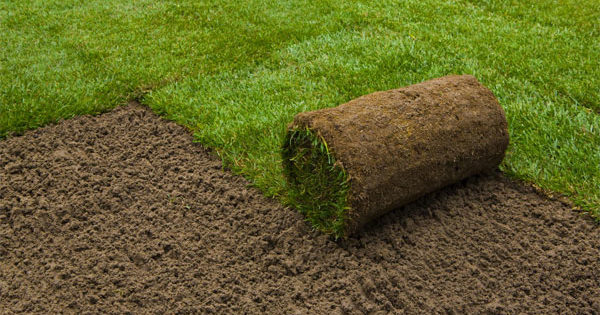
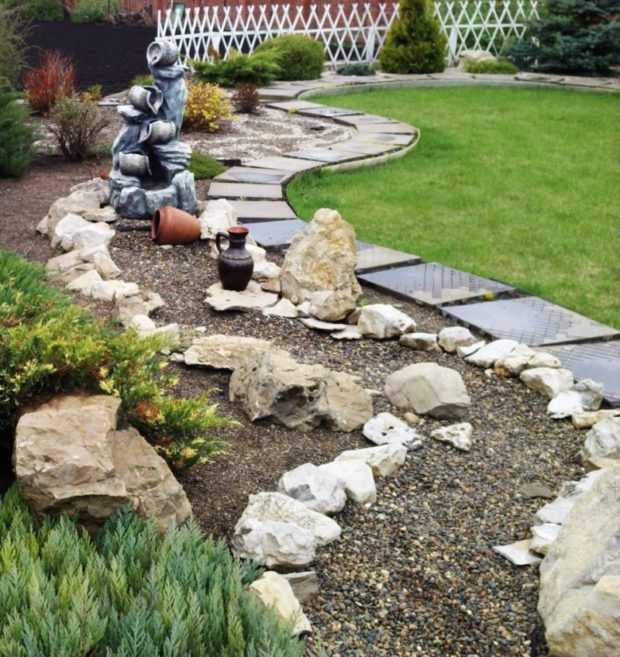
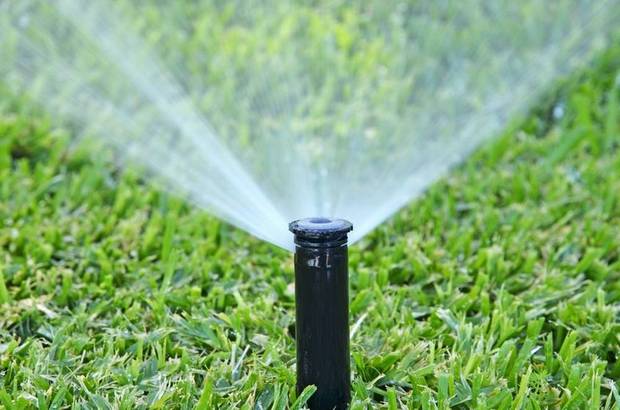

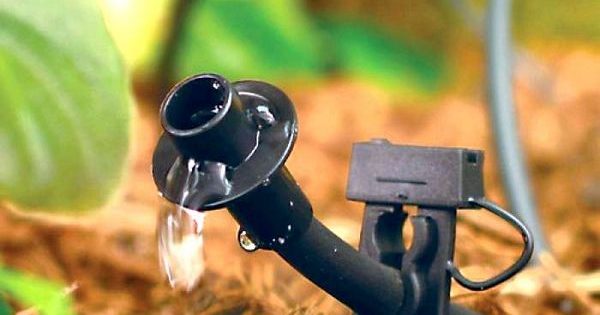
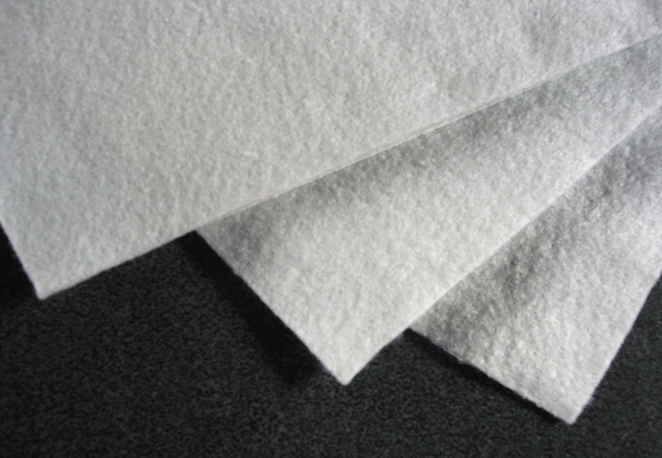
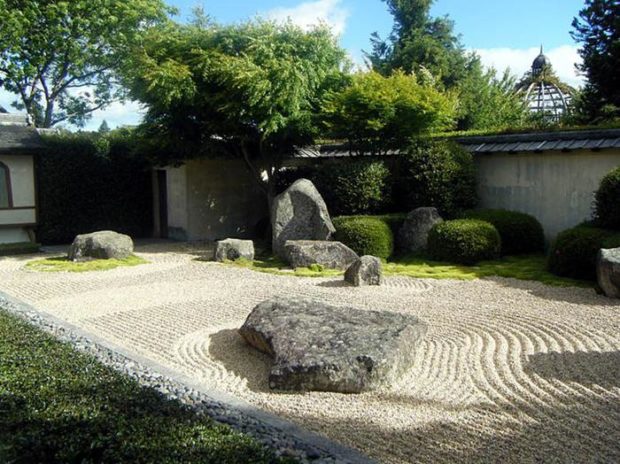

With moles what to do ???
We will soon release separate material on this subject. keep for updates
Thank you for the helpful article!
When the question is how to make a lawn with your own hands, you need to start by studying the varieties of herbs and choosing the right one.